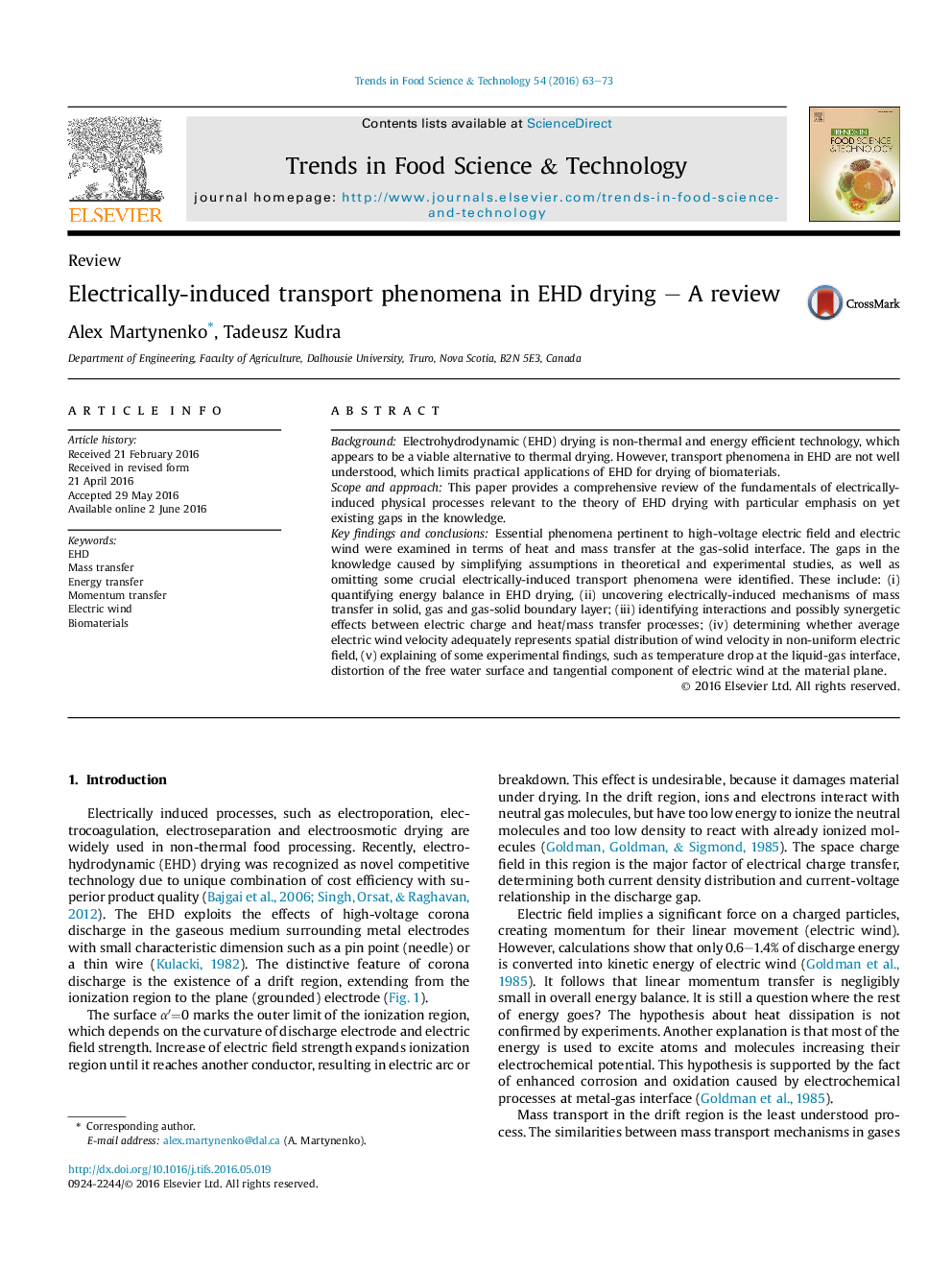| Article ID | Journal | Published Year | Pages | File Type |
|---|---|---|---|---|
| 2098496 | Trends in Food Science & Technology | 2016 | 11 Pages |
•EHD is highly promising technology for premium quality food drying.•Gaps in the knowledge are caused by simplifying assumptions and omitting some crucial electrically-induced transport phenomena.•The Coulomb force is recognized as a major driving force of charge transfer and electric wind.•Mass and heat transfer is enhanced by the effect of electric wind on the solid-gas boundary layer.
BackgroundElectrohydrodynamic (EHD) drying is non-thermal and energy efficient technology, which appears to be a viable alternative to thermal drying. However, transport phenomena in EHD are not well understood, which limits practical applications of EHD for drying of biomaterials.Scope and approachThis paper provides a comprehensive review of the fundamentals of electrically-induced physical processes relevant to the theory of EHD drying with particular emphasis on yet existing gaps in the knowledge.Key findings and conclusionsEssential phenomena pertinent to high-voltage electric field and electric wind were examined in terms of heat and mass transfer at the gas-solid interface. The gaps in the knowledge caused by simplifying assumptions in theoretical and experimental studies, as well as omitting some crucial electrically-induced transport phenomena were identified. These include: (i) quantifying energy balance in EHD drying, (ii) uncovering electrically-induced mechanisms of mass transfer in solid, gas and gas-solid boundary layer; (iii) identifying interactions and possibly synergetic effects between electric charge and heat/mass transfer processes; (iv) determining whether average electric wind velocity adequately represents spatial distribution of wind velocity in non-uniform electric field, (v) explaining of some experimental findings, such as temperature drop at the liquid-gas interface, distortion of the free water surface and tangential component of electric wind at the material plane.
